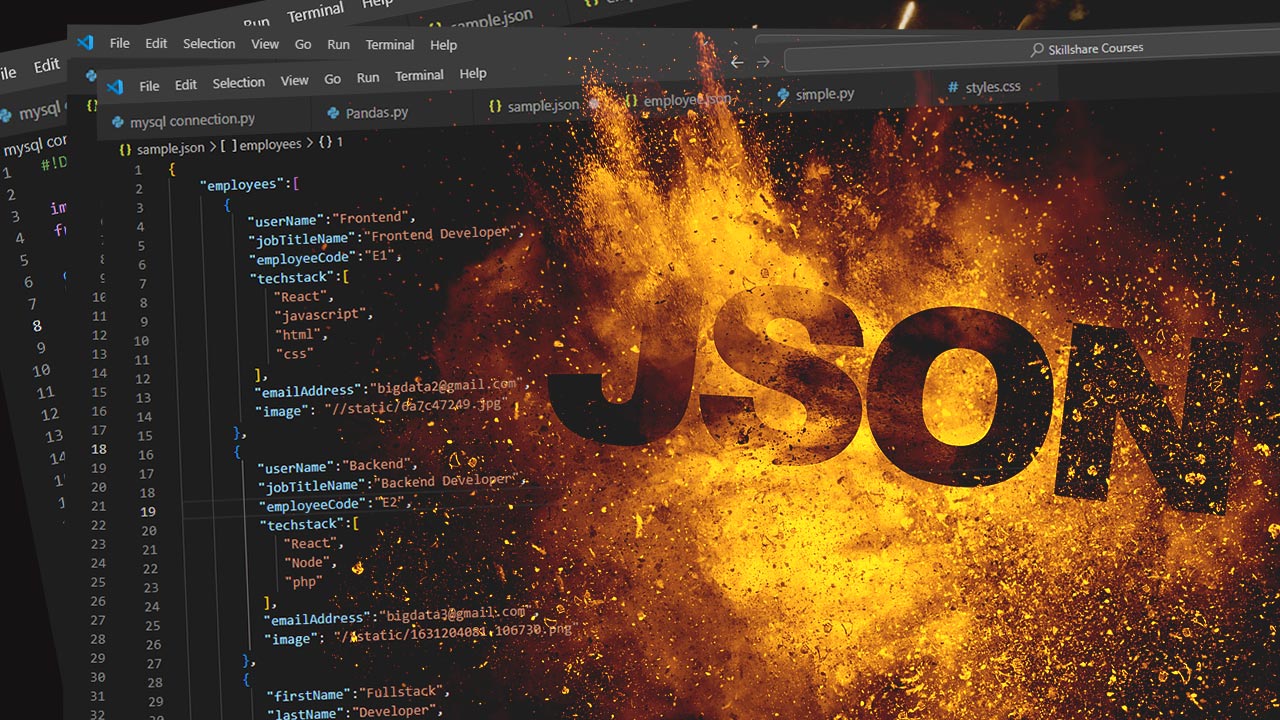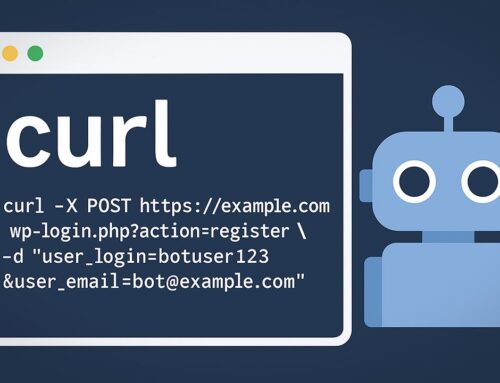What is JSON?
The Backbone of Modern Data Exchange
In our interconnected world, the seamless exchange of information between systems is paramount. Enter JSON (JavaScript Object Notation), a lightweight data interchange format that has revolutionized how applications communicate and store data. As we delve into the world of JSON, you’ll discover its origins, structure, and the myriad ways it’s reshaping the tech industry. Today’s article will take you on a journey through the intricacies of JSON, from its humble beginnings to its current status as a cornerstone of web development and data management. You’ll learn about its syntax, how it compares to other data formats, and why it has become the go-to choice for developers and organizations worldwide. We’ll explore JSON’s role in APIs (Application Programming Interfaces), its use in configuration files, and how it’s powering the Internet of Things (IoT). You’ll gain insights into best practices for working with JSON, common pitfalls to avoid, and tools that can enhance your JSON workflow. By the end of this article, you’ll have an understanding of JSON’s capabilities, its impact on modern software architecture, and how you can leverage its power in your own projects. Whether you’re a seasoned developer or a curious tech enthusiast, this deep dive into JSON, JavaScript Object Notation will equip you with valuable knowledge to navigate the data-driven world of today and tomorrow.
Table of Contents
- What is JSON?
- JSON Syntax and Structure
- Use Cases for JSON
- JSON vs. Other Data Formats
- Working with JSON
- JSON in Modern Web Development
- JSON and the Internet of Things
- Best Practices and Common Pitfalls
- Tools and Libraries for JSON
- Future of JSON
- Top 5 Frequently Asked Questions
- Final Thoughts
- Resources
What is JSON?
JSON, an acronym for JavaScript Object Notation, is a lightweight, text-based data interchange format. It was designed to be easy for humans to read and write, while also being simple for machines to parse and generate. JSON’s simplicity and versatility have made it a cornerstone of modern web development and data exchange.
Origins and Evolution
JSON was first specified by Douglas Crockford in the early 2000s. It emerged as a subset of the JavaScript programming language, specifically its object literal notation, JavaScript Object Notation. Despite its roots in JavaScript, JSON is language-independent and can be used with virtually any programming language. The format gained widespread adoption due to its simplicity and efficiency compared to more verbose alternatives like XML. As web applications became more complex and the need for asynchronous data exchange grew, JSON’s popularity soared, becoming the de facto standard for API responses and client-server communication.
Key Features and Benefits
JSON’s success can be attributed to several key features:
- Human-readable: JSON uses a clear, text-based format that’s easy for developers to understand and debug.
- Lightweight: Its minimal syntax results in smaller file sizes, reducing bandwidth usage and improving performance.
- Language-independent: While derived from JavaScript, JSON can be used with any programming language that supports its data structures.
- Flexible: JSON can represent complex data structures, including nested objects and arrays.
- Wide support: Most modern programming languages and frameworks have built-in JSON support or readily available libraries.
These features have made JSON indispensable in various domains, from web development to mobile applications, and even in emerging fields like IoT and machine learning.
JSON Syntax and Structure
Understanding JSON’s syntax is crucial for effectively working with this data format. JSON is built on two primary structures: objects and arrays.
Data Types
JSON supports the following data types:
- String: A sequence of characters enclosed in double quotes. Example:
"Hello, World!" - Number: Integers or floating-point numbers. Example:
42or3.14159 - Boolean:
trueorfalse - Null: Represented as
null - Object: An unordered collection of key-value pairs
- Array: An ordered list of values
Objects and Arrays
Objects in JSON are enclosed in curly braces {} and consist of key-value pairs. Keys must be strings, and values can be any valid JSON data type. For example:
{
"name",
"age",
"isStudent",
"grades": null
}
Arrays in JSON are ordered lists of values enclosed in square brackets []. They can contain any valid JSON data type, including other arrays or objects. For example:
[
"apple",
42,
true
]
JSON’s structure allows for nesting objects and arrays, enabling the representation of complex data hierarchies:
{
"person"{
"name",
"age",
"hobbies",
"address"{
"street",
"city",
"country"
}
}
}
This flexibility and simplicity in representing structured data have contributed significantly to JSON’s widespread adoption across various domains in technology.
Use Cases for JSON
JSON’s versatility has led to its adoption in numerous scenarios across the tech industry. Let’s explore some of the most common use cases:
API Communication
One of JSON’s primary use cases is in API (Application Programming Interface) communication. RESTful APIs often use JSON as the default format for sending and receiving data. Its lightweight nature and ease of parsing make it ideal for quick data transfers between client and server. For example, a weather API might return JSON data like this:
{
"location",
"temperature",
"unit",
"conditions",
"forecast"
}
Configuration Files
JSON is frequently used for configuration files in various applications and systems. Its human-readable format makes it easy for developers and system administrators to modify settings without needing specialized tools.A typical configuration file might look like this:
{
"databaseConfig"{
"host",
"port",
"username",
"password",
"loggingLevel",
"maxConnections",
"enableFeatures"
}
}
Data Storage
While not a replacement for traditional databases, JSON is often used for storing structured data, especially in document-oriented databases like MongoDB. Its flexibility allows for easy schema changes and storage of complex, nested data structures.
JSON vs. Other Data Formats
To fully appreciate JSON’s strengths, it’s helpful to compare it with other popular data formats:
JSON vs. XML
XML (eXtensible Markup Language) was once the dominant format for data interchange. However, JSON has largely supplanted XML in many use cases due to its simplicity and efficiency. Here’s a comparison:
| Feature | JSON | XML |
|---|---|---|
| Readability | High | Moderate |
| File Size | Smaller | Larger |
| Parsing Speed | Faster | Slower |
| Data Types | Limited built-in types | Extensible |
| Complexity | Low | Higher |
JSON vs. YAML
YAML (YAML Ain’t Markup Language) is another human-readable data serialization format. While similar in many ways, YAML and JSON have distinct differences:
| Feature | JSON | YAML |
|---|---|---|
| Syntax | Braces and brackets | Indentation-based |
| Comments | Not supported | Supported |
| Complexity | Simpler | More features, higher complexity |
| Ecosystem | Wider support | Less widespread |
Working with JSON
Effectively working with JSON involves understanding how to parse, manipulate, and validate JSON data.
Parsing and Stringifying
Most programming languages provide built-in functions or libraries for working with JSON. In JavaScript, for example, you can use JSON.parse() to convert a JSON string into a JavaScript object, and JSON.stringify() to convert an object back into a JSON string:
// Parsing JSON
const jsonString;
const obj;
console// Stringifying JSON
const newObj;
const newJsonString;
console;
JSON Schema
JSON Schema is a powerful tool for validating the structure of JSON data. It allows you to define the expected shape of your JSON, including required fields, data types, and constraints. This is particularly useful for ensuring data integrity in APIs and configuration files. Here’s a simple JSON Schema example:
{
"$schema",
"type",
"properties"{
"name",
"age",
"email"
},
"required"
}
This schema defines an object with name, age, and email properties, specifying their types and constraints.
JSON in Modern Web Development
JSON plays a crucial role in modern web development, particularly in the context of RESTful APIs and Single Page Applications (SPAs).
RESTful APIs
REST (Representational State Transfer) APIs commonly use JSON for data exchange. This architectural style, combined with JSON’s efficiency, has become the standard for building scalable web services. RESTful APIs typically use HTTP methods (GET, POST, PUT, DELETE) to perform CRUD (Create, Read, Update, Delete) operations on resources, with JSON representing the resource state.
Single Page Applications
SPAs rely heavily on asynchronous data loading to provide a smooth user experience. JSON’s lightweight nature makes it ideal for quick data transfers between the client-side application and the server. Frameworks like React, Vue, and Angular often use JSON to manage application state and communicate with backend services.
JSON and the Internet of Things
The Internet of Things (IoT) has embraced JSON for device communication and data representation. Its lightweight nature is particularly beneficial in IoT scenarios where bandwidth and processing power may be limited. JSON is used in various IoT protocols and platforms, enabling seamless communication between devices, gateways, and cloud services.
Best Practices and Common Pitfalls
When working with JSON, consider these best practices:
- Use consistent naming conventions for keys (e.g., camelCase or snake_case).
- Validate JSON data using JSON Schema or similar tools to ensure data integrity.
- Handle parsing errors gracefully to prevent application crashes.
- Be mindful of JSON size in performance-critical applications.
- Use appropriate data types (e.g., numbers for numeric values instead of strings).
Common pitfalls to avoid:
- Assuming JSON supports comments (it doesn’t).
- Using JSON for configuration files that require complex logic or comments (consider YAML or other formats).
- Neglecting to escape special characters in strings.
- Ignoring potential security risks when parsing untrusted JSON data.
Tools and Libraries for JSON
Numerous tools and libraries exist to enhance your JSON workflow:
- JSON formatters and validators: Online tools like JSONLint for quick validation and formatting.
- JSON editors: Visual Studio Code with JSON plugins for enhanced editing capabilities.
- JSON query languages: JMESPath or JSONPath for complex JSON data querying.
- JSON databases: MongoDB or CouchDB for document-oriented storage.
- JSON serialization libraries: Jackson (Java), json (Python), or Newtonsoft.Json (.NET) for advanced JSON handling.
Future of JSON
As technology evolves, so does JSON. Some emerging trends and potential future developments include:
- JSON5: An extension of JSON that adds features like comments and unquoted keys.
- Binary JSON formats: Like BSON or MessagePack for more efficient storage and transmission.
- Integration with GraphQL: As an alternative to REST APIs for more flexible data querying.
- Enhanced security features: To address potential vulnerabilities in JSON parsing and processing.
JSON’s simplicity and flexibility ensure its continued relevance in the ever-changing landscape of technology and data exchange.
Top 5 Frequently Asked Questions
Final Thoughts
JSON, JavaScript Object Notation has revolutionized data interchange in the digital world, becoming an indispensable tool in modern software development. Its simplicity, flexibility, and widespread support have made it the de facto standard for API communication, configuration management, and data storage in various applications. The most important takeaway from this article is that JSON’s power lies in its ability to represent complex data structures in a human-readable format while remaining efficient for machine processing. This dual nature has enabled developers to create more intuitive APIs, streamline data flows between different systems, and build more responsive web applications. As we move towards an increasingly interconnected world, with the Internet of Things and cloud computing at the forefront, JSON’s role in facilitating seamless data exchange will only grow in importance. Its adaptability to emerging technologies and continuous evolution through extensions like JSON5 ensure that it will remain a cornerstone of data representation and interchange for years to come. Understanding JSON and its ecosystem is not just a technical skill—it’s a fundamental literacy in today’s data-driven world. Whether you’re a developer, a data scientist, or a technology manager, proficiency in JSON, JavaScript Object Notation will empower you to build more efficient systems, make informed decisions about data architecture, and effectively navigate the complex landscape of modern software development.









Leave A Comment